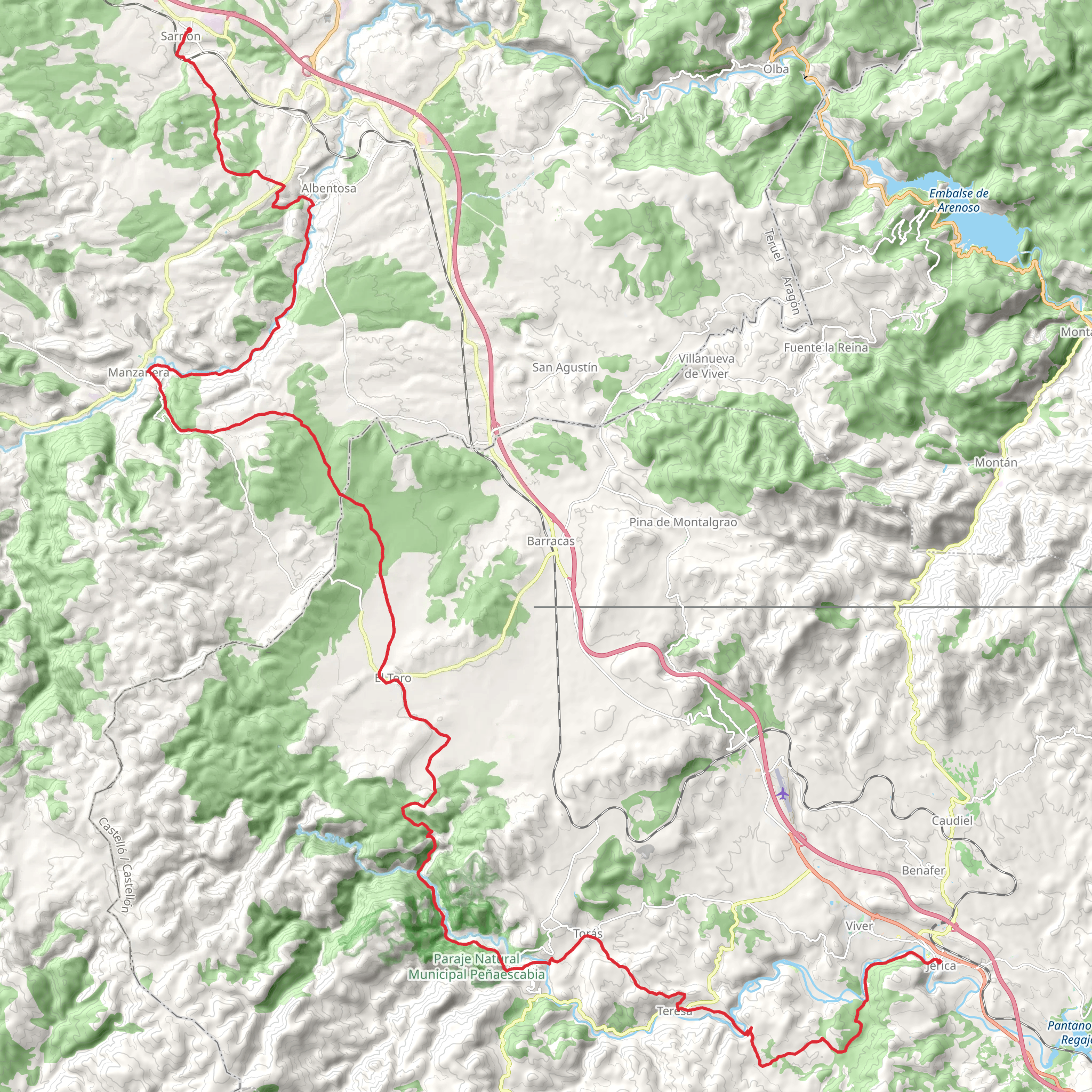
Download
Preview
Add to list
More
64.1 km
~4 days
1870 m
Multi-Day
“Trek the GR 231 for a medley of heritage, biodiversity, and sweeping vistas in Spain's heartland.”
Embarking on the GR 231 Ruta de Pinares a Sabinares, hikers will traverse approximately 64 kilometers (about 40 miles) of diverse landscapes in the Comunidad Valenciana, with an elevation gain of around 1800 meters (nearly 5900 feet). This point-to-point trail begins near the quaint town of Jérica, Spain, and is rated as medium difficulty, offering a blend of scenic vistas, historical sites, and a rich tapestry of flora and fauna.
Getting to the Trailhead
To reach the starting point of the GR 231, travelers can either drive or use public transportation. For those opting for public transport, the nearest train station is in Jérica-Viver, which is accessible from Valencia and other major cities. From the station, the trailhead is a short taxi ride or a walk away. If driving, Jérica is well-connected by road, and parking can be found in the town or near the trailhead.
Navigating the Trail
The trail is well-marked with the characteristic white and red stripes of the GR (Gran Recorrido) routes. Hikers can enhance their navigation with the HiiKER app, which provides detailed maps and GPS tracking to ensure a safe and enjoyable hike.
Landmarks and Historical Significance
As hikers set out from Jérica, they will be greeted by the sight of the town's historic bell tower, known as the Torre Mudéjar de Jérica, a testament to the region's rich Moorish and Christian heritage. The trail meanders through pine and oak forests, leading to the Palancia River, where the lush riparian ecosystem is a stark contrast to the surrounding drylands.
Further along the route, the trail ascends to higher elevations, offering panoramic views of the Sierra de Espadán Natural Park. This area is known for its unique cork oak trees and is a sanctuary for wildlife, including Iberian ibex, eagles, and a variety of endemic plant species.
Flora and Fauna
The GR 231 is a haven for nature enthusiasts. The Pinares, or pine forests, are home to Scots and Aleppo pines, while the Sabinares, or juniper woodlands, showcase the resilience of the Phoenician juniper, which thrives in the arid climate. The diversity of ecosystems along the trail supports a wide range of birdlife, from forest dwellers to raptors soaring above the open landscapes.
Terrain and Climate
The trail's terrain varies from gentle forest paths to rocky ascents, with the most significant elevation gain occurring in the first half of the hike. The climate in the region can be quite variable, with hot, dry summers and cool, wet winters. Hikers should be prepared for changing weather conditions and carry adequate water, especially during the warmer months.
Preparation and Safety
Adequate preparation is key to a successful hike on the GR 231. Hikers should wear sturdy footwear and carry a map, compass, and the HiiKER app for navigation. It's also important to pack sufficient food, water, and sun protection, as well as layers of clothing to adapt to the changing temperatures at different elevations.
Cultural Interaction
The trail not only offers natural wonders but also provides opportunities to engage with local culture. Small villages along the route, such as Navajas, with its famous El Salto de la Novia waterfall, offer a glimpse into rural Spanish life. Hikers can enjoy local cuisine, interact with friendly locals, and learn about the traditions that have shaped the region.
By the time hikers reach the end of the GR 231 Ruta de Pinares a Sabinares, they will have experienced a rich tapestry of natural beauty, wildlife, and cultural heritage that makes this trail a memorable journey through the heart of the Comunidad Valenciana.
Comments and Reviews
User comments, reviews and discussions about the GR 231 Ruta de Pinares a Sabinares - Comunidad Valenciana, Spain.
average rating out of 5
0 rating(s)
